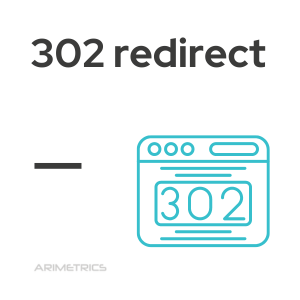Definition:
A 302 redirect is a type of redirect that informs search engines and browsers that the web page has been temporarily moved to a different URL. It is usually used when the owner of a website wants to redirect users from an old page to a new one without losing any link equity in the process. It is also often used as part of a website redesign or rebranding.
When used, the search engine is instructed to retain any existing links to the old URL and transfer it to the new one. This is beneficial for SEO, as it helps maintain rankings when URLs are changed. It also helps ensure that users are directed to the correct page of your website.
When to use a 302 redirect
It is important to understand that this type of redirection is only temporary. This means that the old URL will still exist and that no links pointing to the old page will be lost. A 302 redirect should be used when you want to direct users from an old page to a new one without losing the value of the links and allowing the old page to remain accessible. It’s also useful when you want test a new website design or rebrand without affecting your SEO positioning. All in all, if you’re looking for a way to keep SEO rankings intact while temporarily redirecting traffic to a different URL, then 302 redirect is ideal.
By using a 302 redirect, you can be sure that users will only be directed to the right page and that none of their link value will be lost in the process. This makes it a very valuable tool for webmasters looking to maintain existing rankings while making changes to their websites.
Difference Between a 302 Redirect and a 301 Redirect
The main difference between a 302 redirect and a 301 redirect lies in the way search engines and browsers interpret them. A
301 redirect is considered a permanent move and instructs search engines to automatically transfer all link equity from the old URL to the new one. This means that all links pointing to the old page will now point to the new one and that the new URL will replace the old one in the search engine results.
A 302 redirect, on the other hand, is considered temporary and instructs search engines to keep existing links pointing to the old page and transfer them to the new one without replacing it in search engine results. This means that users can continue to access the old page while being redirected to the new one. It also ensures that no link value is lost in the process. As such, it is often used when a website owner wants to temporarily move an old page without affecting rankings or losing any link values.
How to make a temporary 302 redirect
Setting up a temporary 302 redirect is relatively easy, and can be achieved using several methods. For example, if you are using
Apache web hosting, you can configure redirection by adding the following code to your .htaccess file:
301 /old-page/http://www.example.com redirect
Alternatively, you can use a WordPress plugin like Redirection, which allows you to set up redirects quickly and easily. Another option is to contact your web host and ask them to set up the redirection for you. Whichever method you choose, make sure the code or settings are properly configured for temporary 302 redirection to work.
Overall, understanding when and how to use a 302 redirect is important for any webmaster who wants to make changes to their website without affecting SEO rankings. By using the right code or plugin, you can ensure that users are directed to the correct page of your website, while preserving the value of existing links. This makes it a very valuable tool to keep your SEO positioning and keeping your website updated.
